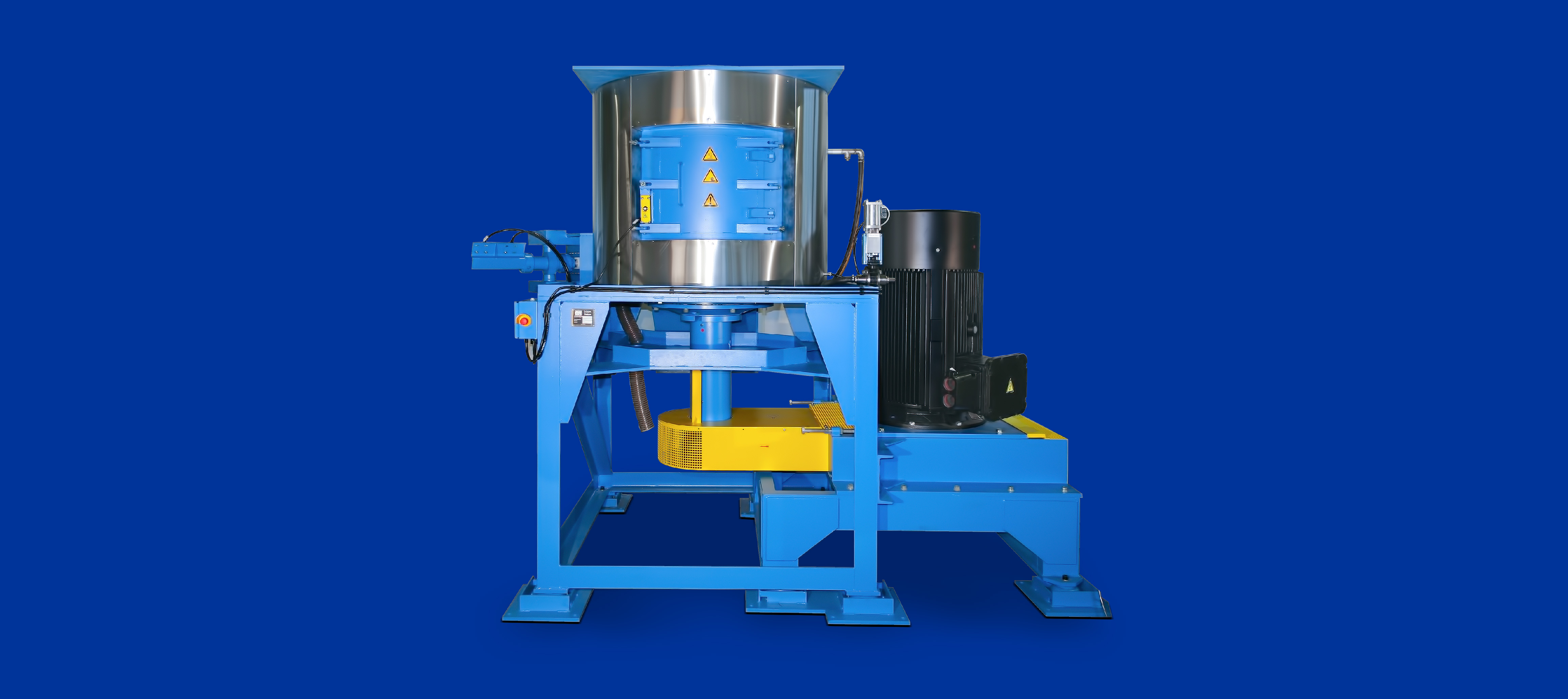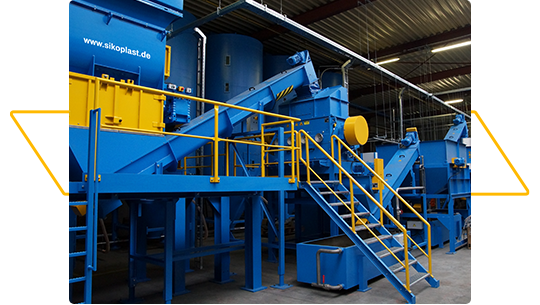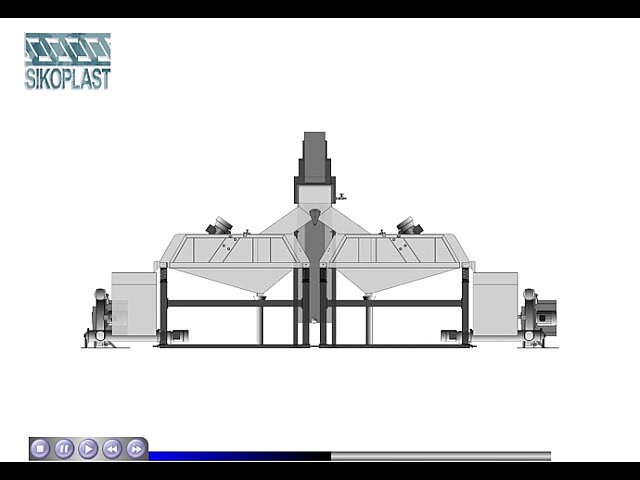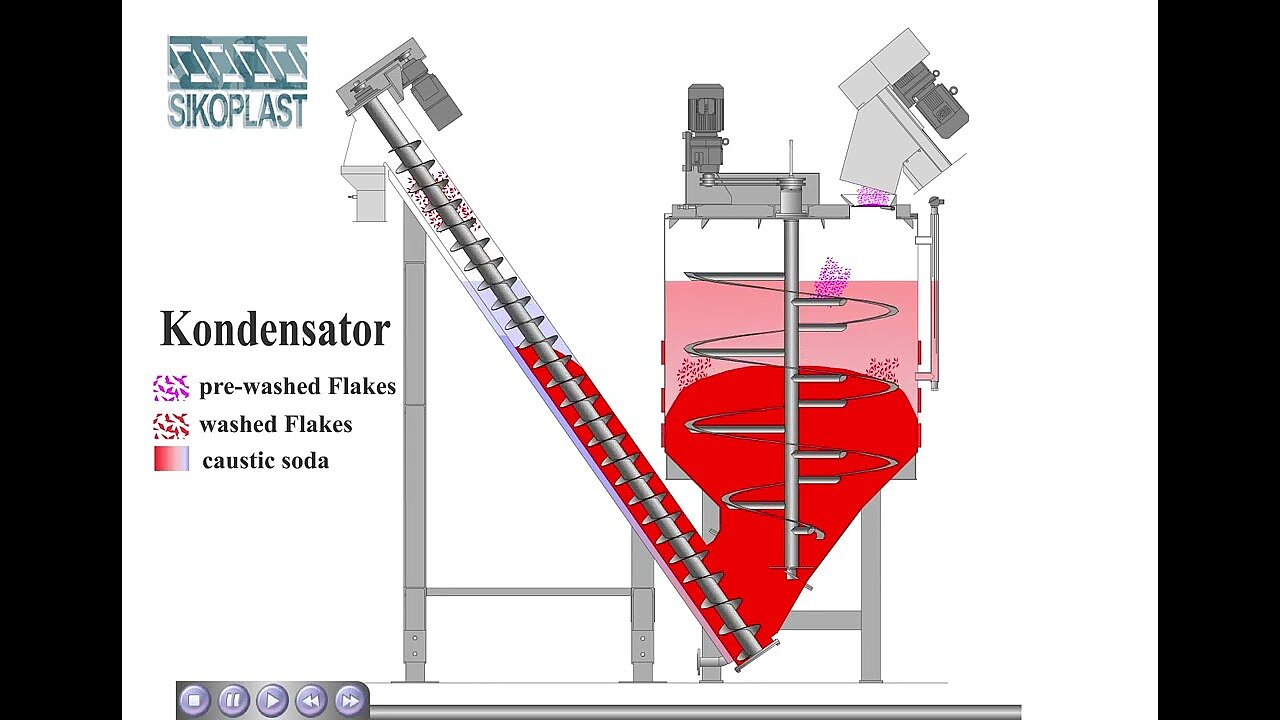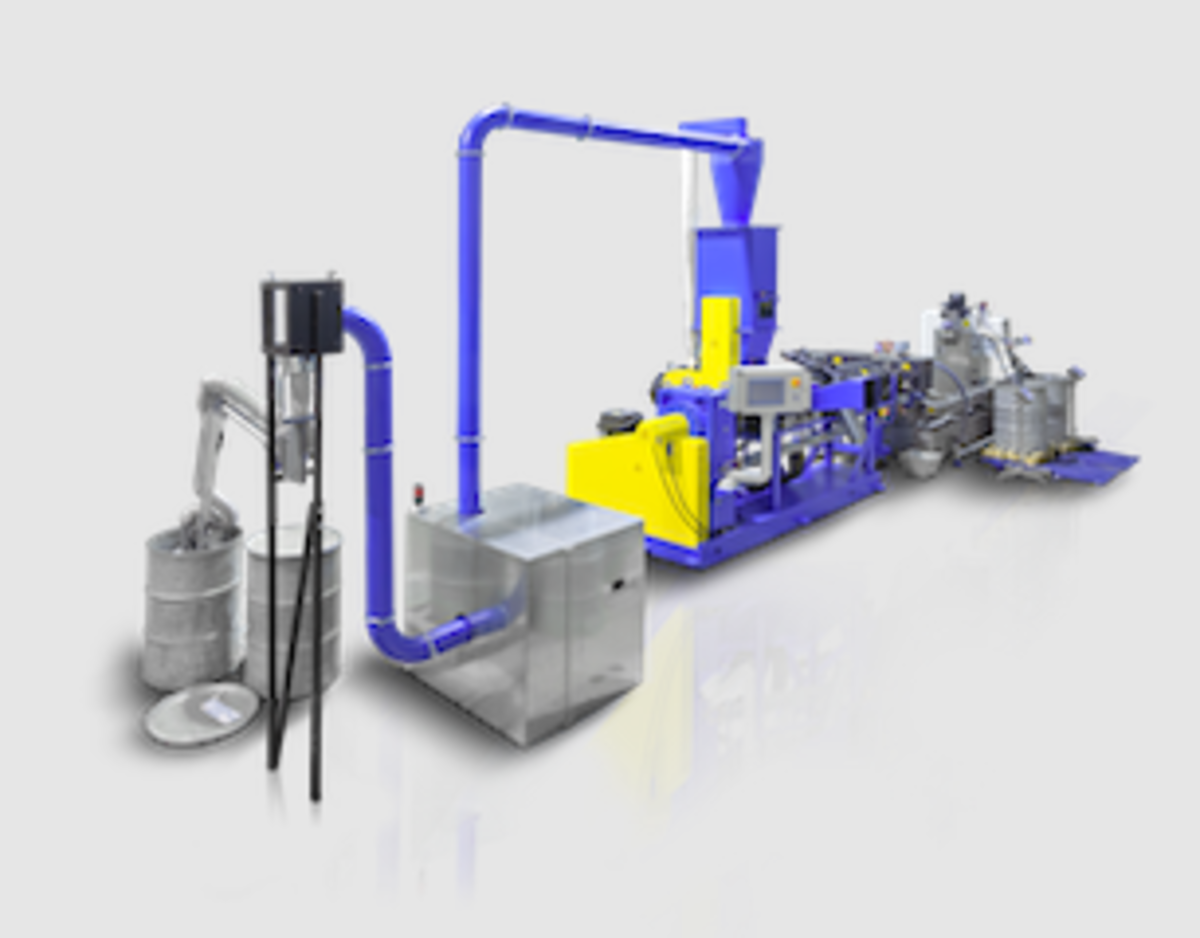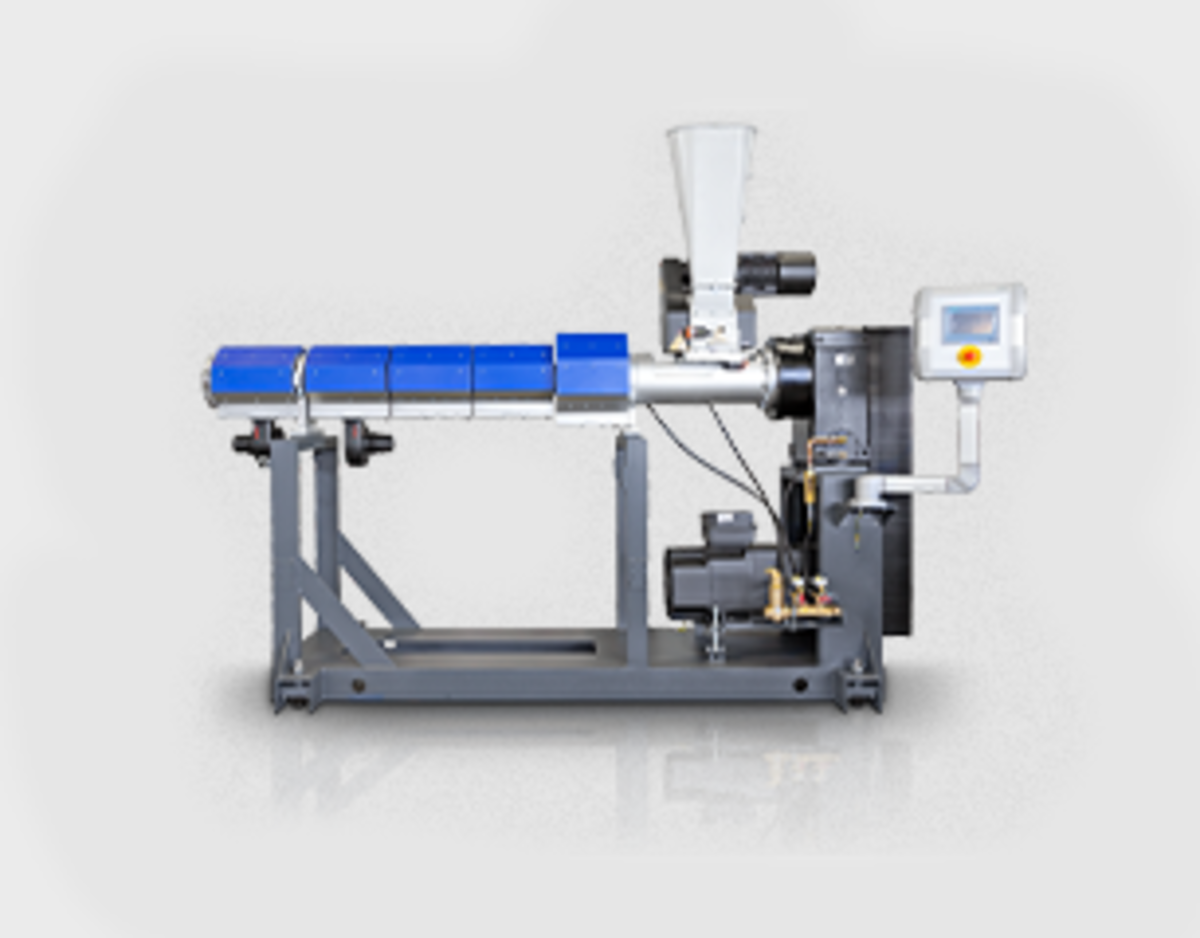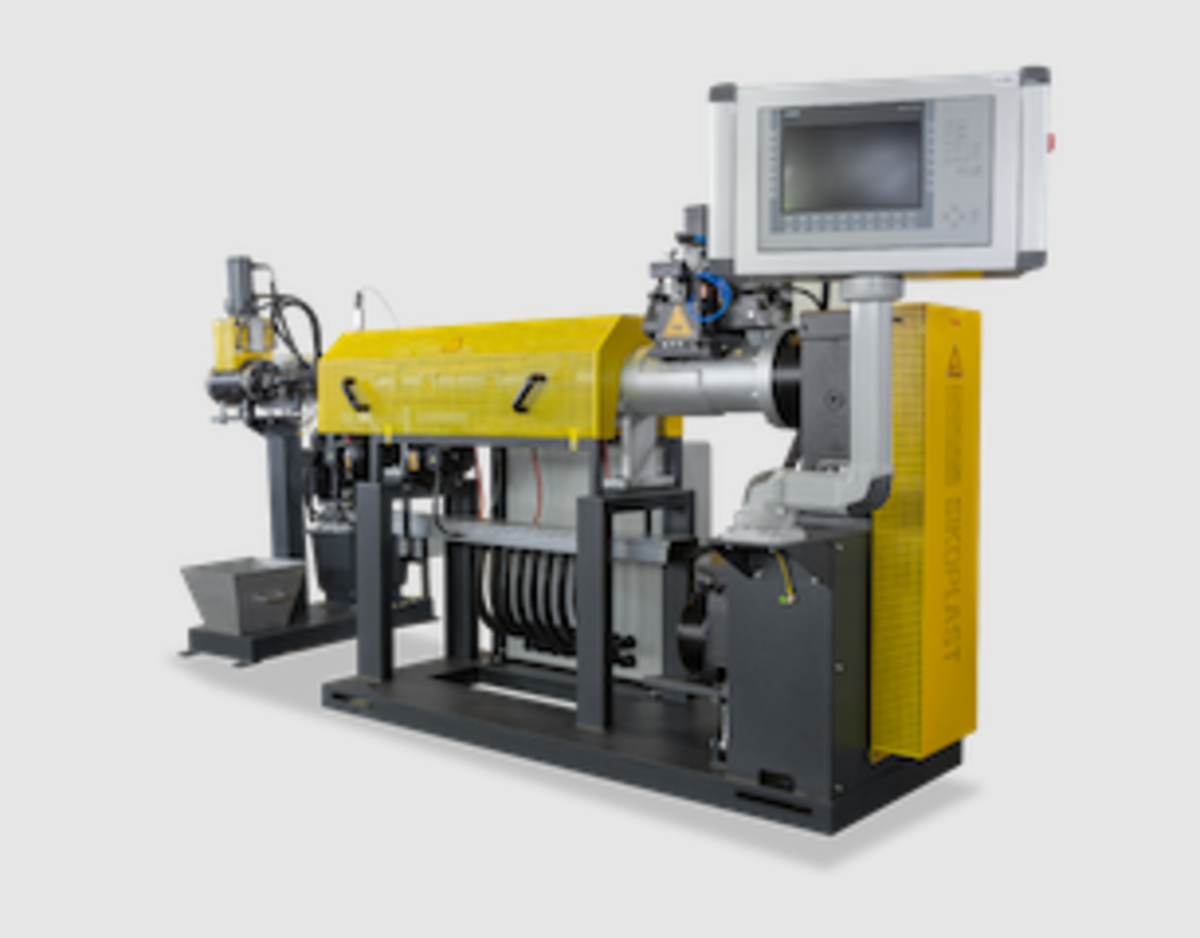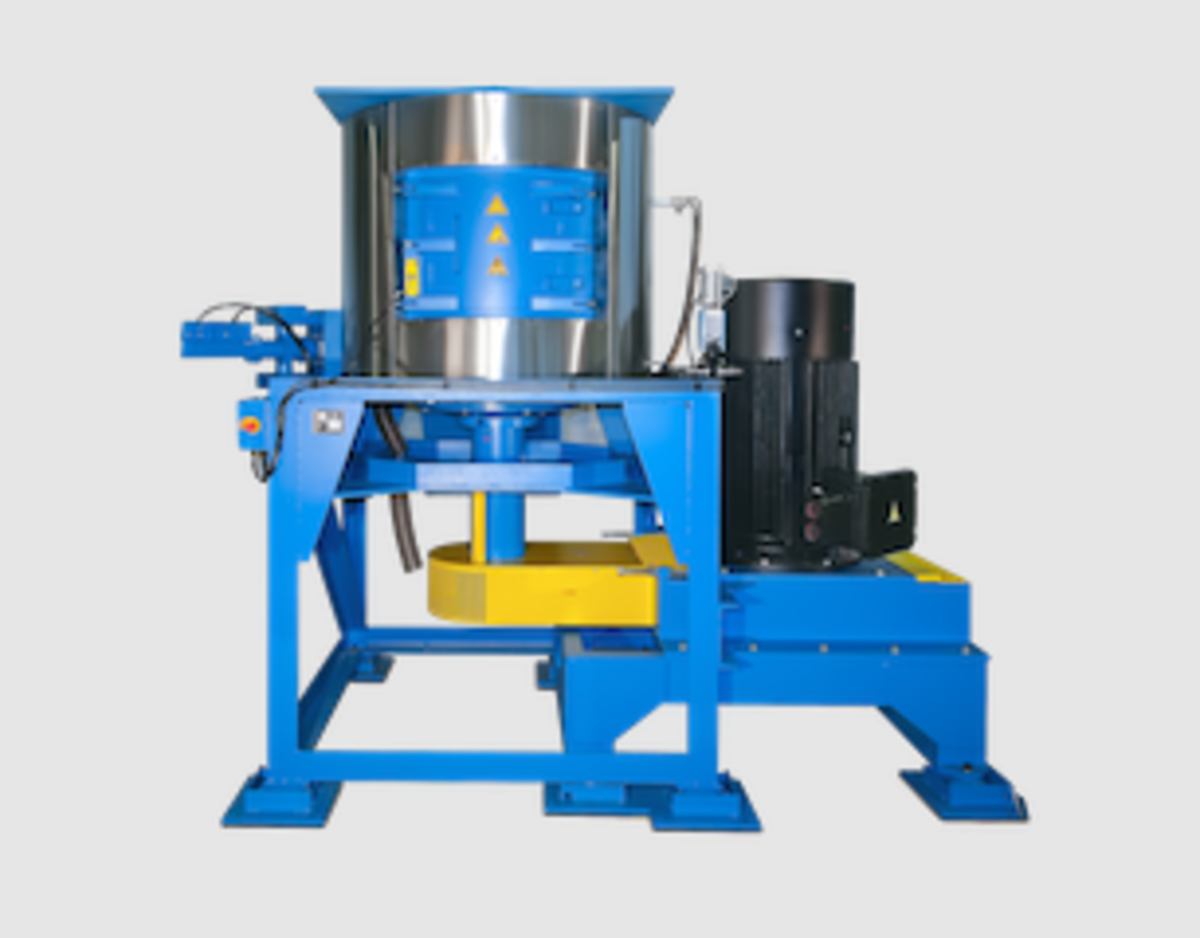Washing plants for thermo-plastic plastics
Our current generation of washing systems for heavily soiled plastic waste is the result of continuous development. Since 1977 we have been designing and building washing systems for heavily soiled plastic articles from the post consumer sector. This experience led to the development of our current generation of modular washing systems. For you, this means a solution tailored to your task and the desired purity.
How it works
- The PET bottles are usually pre-sorted and pressed into bales. These are transported via conveyor belt into the bale opener and separated there into individual bottles.
- In the next stage, the PET bottles are ground into PET flakes in a wet granulator.
- The already shredded input material is then subjected to an intensive cleaning process in the subsequent friction washer. In this process, paper labels and adhesives are removed. In the pneumatic separating stage, vibrating units and fans separate out the loosened contaminations.
- In the floatation tank, the infed material is separated using a density based procedure.
- PET flakes sink to the bottom of the tank, the PE/PP lids remaining floating on the surface of the water.
- If a particularly high level of purity is to be achieved for the PET flakes, the line is enhanced at this point by a hot washer. The addition of washing media (NaOH) is possible at this stage.
- The clean flakes are fed into the drying system, dried to a residual moisture level of less than 1 % and pre-crystallised at the same time.
- In place of the manual sorting described under point 2, an automatic sorting unit may be integrated to sort according to material type and/or colour.
- Then the clean PET flakes are filled into big bags or transported into a silo for further processing.
Areas of application
- For washing plastic material waste
- For bottles, film, technical plastics and other materials
- Harvesting of clean flakes, agglomerate
- The washed material is suitable for use in food packaging and thus fulfils the highest quality standards
- For existing washing plants, we make upgrades available or provide individual components/segments in order to achieve increased quality
Our supply range includes standard systems with material through-put performances of up to 2,000 kg/hour
The washing plants achieve an above average level of cleanliness even with heavily soiled input material, even without the addition of chemical washing aids.
The selection of individual components means that we can tailor the system to your needs, to achieve the level of quality of washed flakes you need
With our washing systems, we are able to create high quality flakes that are suitable for use in food packaging (B2B procedure)
The modular construction makes it possible for us to offer a washing plant tailored to your specific application needs
A complex washing plant can be individually positioned and can even be installed in small production halls
The washing plants can be expanded with an on-site water recycling system. This means that waste water is operated in a closed system thus putting less pressure on resources and the environment
Thanks to the use of high-quality and energy-efficient motors and drives, the energy consumption of the entire plant can be reduced, and in some instances can even be reduced to under 0.4 kW/kg
Extruder systems offline
Our recycling extruders - optimised for the feeding of light, non-free-flowing feed materials.
To extruder systemsSikorex edge trim system
The SIKOREX series form the basis for an economic preparation - optimised for the return of roll material or for direct edge trim return.
To Sikorex edge trim systemHybrid edge trim system
The HYBRID system covers all requirements of a modern spunbond production - even on high-speed winders with speeds above 1,500 m/min a direct edge trim return is guaranteed.
To Hybrid edge trim systemWashing plants
Our washing system with friction washer and the patented wet separation stage with integrated pre-flotation enable above-average purity grades, even with heavily soiled feed material.
To washing plants
